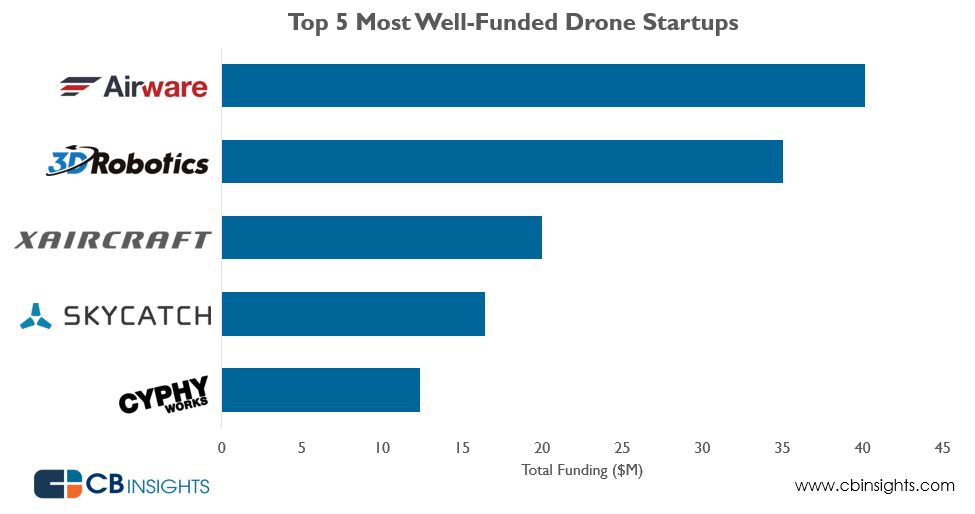CNBC just wrote a fantastic article highlighting where the money is in the drone industry. As you would think, it’s progressed from simply companies that sell drones off the shelf, and moved much more into the drone service providers. Companies providing advanced data and systems to large companies are where the money is shifting.
The drone industry is expected to climb to a whopping $8.4 billion by 2019, according to ABI Research. But most of that growth won’t come from selling hardware.
Instead, it’s all the applications and services on top of of the hardware (sometimes literally), that hold the big opportunity, said industry experts.
All about commercial drone services
“Application services, data services, licensing and legal services—once you start adding all of this into the mix, the size of the marketplace starts growing very, very quickly,” said Dan Kara, an ABI Research analyst, at the RoboUniverse Conference this week in New York.
“The money to be made is actually in the application space to a large degree,” he said.
Companies playing in this space include those like PrecisionHawk—which combines unmanned aerial systems with information delivery and sensing technologies to enhance business operations for a slew of different industries—and Airware, a developer of drone software, hardware and cloud services.
“So the services [offered by drones] are stored, manipulated and optimized depending on what you are looking for. It’s then georeferenced and tagged in a way that you can access that data in the cloud,” Kara said. “So really what it is is not a drone delivery platform, it’s actually an information services architecture.”
Last month, Airware launched an operating system for commercial drones to help big companies both scale their drone operations, and to help them adhere to safety regulations and insurance requirements.
“Big companies like GE, they can take a small consumer system, and they can take some pictures, but what happens when they need to use hundreds of them?” said Jesse Kallman, director of business development and regulatory affairs for Airware.
“How do you do that safely and reliably? How do you do that at scale? How do you get certification for these types of systems?” Kallman said.
“[Big companies] are not going to use this technology unless it’s proven to be safe,” he said.
Read MoreFAA makes big step for drones
Follow the money
In total, VC funding in drone companies was more than $108 million across 29 deals in 2014, according to data from CB Insights.
According to the research firm, Airware was the best-funded drone start-up in 2014, having raised a total of $40 million from venture capital firms including Kleiner Perkins Caufield Byers, Andreessen Horowitz and First Round Capital. Last month, the company also received an undisclosed investment amount from Intel Capital, which is also invested in PrecisionHawk.
“It’s a data play. We are going to sell servers and we are going to sell chipsets based on getting this new class of information that we couldn’t get before in the same degree in the same amounts,” Kara said.
Traditional drone suppliers both in the consumer and military space are aware this is where the money is flowing and are all trying to get a piece of the action, he said.
For example, more consumer-focused drone makers are adding more advanced capabilities, and military drones, which are typically single-purpose, are beginning to add more technologies so that they can be used for many different scenarios.
“Every drone supplier knows this, they recognize this. So you see the military and civil guys moving down and adding new technologies and the prosumer folks are also upgrading their systems,” Kara said.



